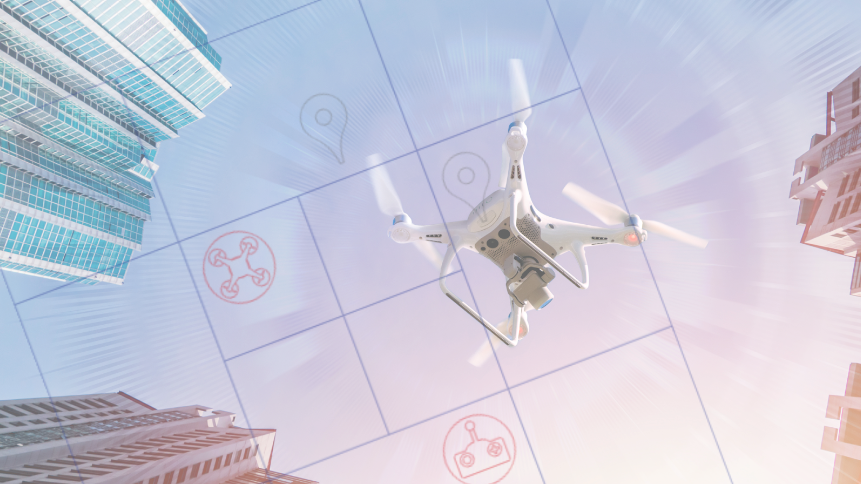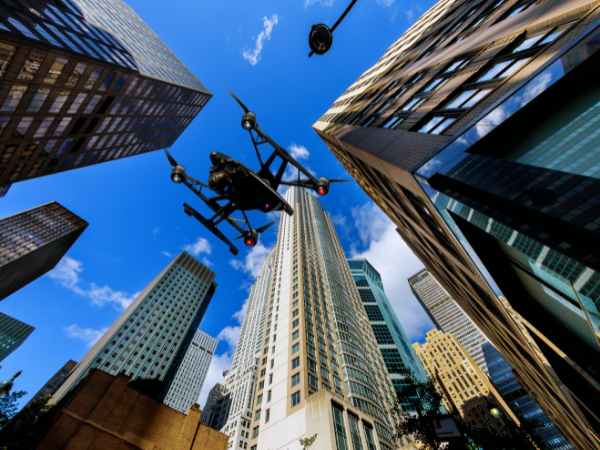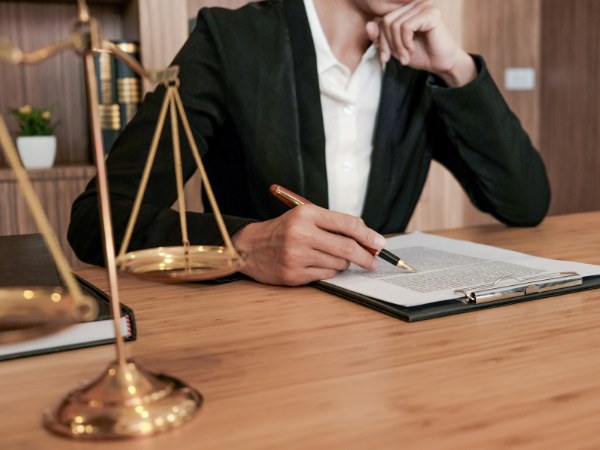Rapid advancement of drone technology has led to benefits in various sectors, but it also poses a great threat. Clueless, careless, and criminal drone pilots endanger the public. The most dangerous include espionage, smuggling, terrorism, interference with aircraft, and data breaches.
Government officials have not shied away from the discussion of possible legislation, but the future landscape of drone regulation is unclear. This blog will provide information into federal laws which currently regulate drone and drone detection, the possible threats drones pose to people and property, and some measures you can take to keep yourself safe and aid in rapid, reliable responses.
Current Drone Regulation
The United States has few laws which regulate the use of drones. Some of these “drone laws” have been passed for multiple years, while others are new. These federal regulations are important to know whether you are a drone pilot, a property owner, or simply a curious individual.
Here are the most notable federal drone laws:
-
USC 44809
- Describes how, when, and where you can fly drones for recreational purposes.
-
USC 302a
- Prohibits most non-federal entities from manufacturing, importing, shipping, selling, or using devices that fail to comply with FCC regulations regarding devices that can interfere with radio reception, including transmitters designed to block, jam, or interfere with wireless communications.
-
The Aircraft Sabotage Act
- Criminalizes certain destructive actions with respect to “aircraft,” including damaging, destroying, or disabling those aircraft.
-
The Wiretap Act
- Prohibits intentionally intercepting the content of any electronic communication, unless done so by court order.
-
The Pen/Trap Statute
- Criminalizes anything that can record, decode, or capture non-content dialing, routing, addressing, or signaling information.
-
American Security Drone Act (ASDA)
- Prohibits federal agencies from procuring and operating non-secure drones.
-
FAA Part 107 Certification
-
-
- Required to be a commercial drone pilot for small Unmanned Aircraft Systems (sUAS) (less than 55 pounds).
- Also lays out regulations for non-commercial drone pilots.
- Required to be a commercial drone pilot for small Unmanned Aircraft Systems (sUAS) (less than 55 pounds).
-
-
FAA Remote ID Drone Broadcast Mandate
-
-
- This states that all drones must broadcast a unique ID via Wi-Fi or Bluetooth to receivers
-
-
FAA Temporary “No Fly Zone” Restrictions
-
-
- The FAA may enforce temporary restrictions to flights, manned or unmanned, in areas due to events such as sporting matches, political events, certain government activities, or other events where threats of crime or terrorism may be high.
-
-
-
- Use the FAA’s official app “B4UFLY” to be aware of flight rules and temporary restrictions.
- EXAMPLE: A man is facing up to four years in federal prison and $350,000 in fines for flying a drone near M&T Bank Stadium during the NFL AFC championship game on January 28th, 2024. The area surrounding the stadium was labeled a “no fly zone” by the FAA in the days leading up to the game. The pilot was not using the B4UFLY app, rather relying on DJI Drone software to tell him where he could and couldn’t fly.
- Use the FAA’s official app “B4UFLY” to be aware of flight rules and temporary restrictions.
-
-
FAA Reauthorization Act of 2024
-
- Extends mitigation waivers to government agencies such as The Department of Homeland Security (DHS) and Department of Justice (DOJ) allowing them to engage in mitigation tactics.
- Designates specific drone test ranges.
- Establishes an Unmanned and Autonomous Flight Advisory Committee (UAFAC).
- Broadens the FAA's ability to enact "no-fly-zones", specifically over large gatherings such as concerts.
- Extends mitigation waivers to government agencies such as The Department of Homeland Security (DHS) and Department of Justice (DOJ) allowing them to engage in mitigation tactics.
-
It is important to note that although these are some of the main federal laws, it is crucial to check the local legislation of both the state and county you reside in regularly for new or unique laws.
Drone-Use Threats
Although the laws mentioned above directly regulate drones and how they are used, drone technology has quickly outpaced government regulation. Even while technically obeying all laws in their construction and features, drones can still be used for nefarious or criminal purposes. Just like any helpful tool, when put in the wrong hands can be used for great harm. The following are just a few examples of how drones can be used in threatening and criminal ways:
-
Voyeurism / “Peeping Tom”
- Drone technology makes it even easier for predators to perform acts of voyeurism, otherwise known as “Peeping Tom”. Some drones use very expensive and high-end cameras that can record from a considerable distance. New drone technology also allows drones to fly quieter than ever before.
-
Vandalism/Arson
- Whether it is intentional or simply due to a lack of experience, drones can cause substantial damage to property. Especially with the speed new-age drones are capable of and their increased structural ruggedness, drones can be speedy flying battering rams endangering one's property.
- Irrationality and inexperience don’t mix when it comes to drone pilots, often resulting in crashes. These crashes can, in some cases, lead to fires. This was the case back in 2018 when a lithium-ion battery powered drone crashed in Boulder County, Colorado, igniting a blaze that burned more than 50 acres.
-
Assault
- In extreme cases, drones can get into the hands of someone who truly wishes to cause harm. Most recreational drones have a multi-rotor design, with four durable rotors spinning between 8,000 and 20,000 RPMs. Combine these spinning rotors with a durable design and ground speeds of over 60 mph and you have a controlled dangerous projectile that can cause great bodily harm.
-
Unauthorized Audio/Video Recordings on Private Property
- Similar to using drones with the malicious intent of voyeurism, drones can be used to spy on and record people in/on their own private property. Drones have the ability to record high-quality audio and video and can do so seemingly undetected. This presents a real danger and invasion of privacy.
-
Harassment
- Just as a stalker may follow one's movements, verbally abuse them, invade their privacy, and harass them, so can drones. Skilled pilots can fly near individuals at high speeds and with great precision, causing fear and endangering the individual.
-
IP Theft
-
-
- With new and advanced technology, it is possible for drones to enter your area and help steal valuable data from your employees, networks and servers. This poses the threat of a large data breach that can shut down companies, infrastructure, and lead to many other things such as the selling of personal information on the black market.
-
Preventative Measures You Can Take
How do you prevent, protect, or quickly respond to these ever-increasing drone threats? Although government officials have enacted some regulation, it is up to you to help enforce those laws. Below is a list of ways that you can:
-
Critical Infrastructure
-
-
- If you manage critical infrastructure in the United States, there is already a federal law in place that prohibits drone use on those properties. However, signs around property limits need to be erected to properly educate the public and help in possibly enacting the law against offenders.
-
-
No Fly Zones
-
-
- In cooperation with the FAA and government officials, a few unique locations that are deemed high value targets and go through a lengthy approval process can set up laws that create “no fly zones” around key properties. This is a difficult route to go, but is possible with enough public traction and time. Sometimes these “no fly zones” are only temporarily enforced, as was the case in Las Vegas for Super Bowl LVIII.
-
-
Drone Detection Systems
-
-
- Another measure you can take to protect yourself and ensure quick response by law enforcement is by installing or using a drone detection system. These systems establish zones around properties that monitor for drone activity. An example of this technology is the AirWarden™ Drone Detection System. It uses advanced RF spectrum sensing technology that scans specific frequencies most commonly used by drones. It can then exactly locate the drone, its direction, and locate the pilot which aids in quick response to illegal or dangerous drone activity.
- Drone detection systems also help find and persecute those who break the law. One can take a copy of their drone detection system broadcast to authorities such as the FAA, a LEAP (Law Enforcement Assistance Program) Agent, or even the FBI who can then use the broadcast to help track down pilots.
- Another measure you can take to protect yourself and ensure quick response by law enforcement is by installing or using a drone detection system. These systems establish zones around properties that monitor for drone activity. An example of this technology is the AirWarden™ Drone Detection System. It uses advanced RF spectrum sensing technology that scans specific frequencies most commonly used by drones. It can then exactly locate the drone, its direction, and locate the pilot which aids in quick response to illegal or dangerous drone activity.
-
-
Securing Your Network
- If a drone comes close enough to your property, it may be able to access your wireless networks and extract data. Making sure your Wi-Fi is secured and password protected will help prevent this illegal activity.
- Drones can be used to fly in rogue access points that mimic your networks to collect information from employees who connect to it accidently.
Conclusion
Drones can be a tool for great good and increase our quality of life. However, they can also be used for great harm and to cause incredible amounts of damage. It is important to know what laws are currently in place that help regulate drones and drone detection, but it’s even more important to know what you can do to help enforce these laws. Take action today, because drones are here to stay.


